How To Pick The Perfect Winter Bike Tires
Posted by Steve on 11/22/19
Last modified: 10/20/21

As your only point of contact on road and trail surfaces that can range from deep snow to slippery ice, tires are one of the most important parts of any winter riding setup.
It pays to spend time finding tires that are suited to your local trail conditions and riding style. Your local 45NRTH retailer can help you, but learning to do it yourself is easier than you think.
In this article, we’ll teach you how to read a tire’s tread pattern to determine how it will behave in any given conditions. There are four main characteristics of a tread pattern: propulsion traction, braking traction, cornering traction, and rolling efficiency. Let’s take a look at what each of these mean:
1. Propulsion Traction is a tire’s ability to dig in and move you forward when you pedal. This is especially key when you’re riding in snow or on slippery surfaces.
The tire’s center tread does most of the work here. The forward-facing sides of the lugs (also known as “knobs”), in the center of the tire are designed to dig into the terrain and push you forward as you pedal.
Tal, squared lugs provide more propulsion traction, but lugs that are rounded or ramped on the forward-facing sides will reduce rolling resistance. Siping (slits cut into the lugs), allows the tire to conform to the terrain better, providing more surface area and greater propulsion traction.
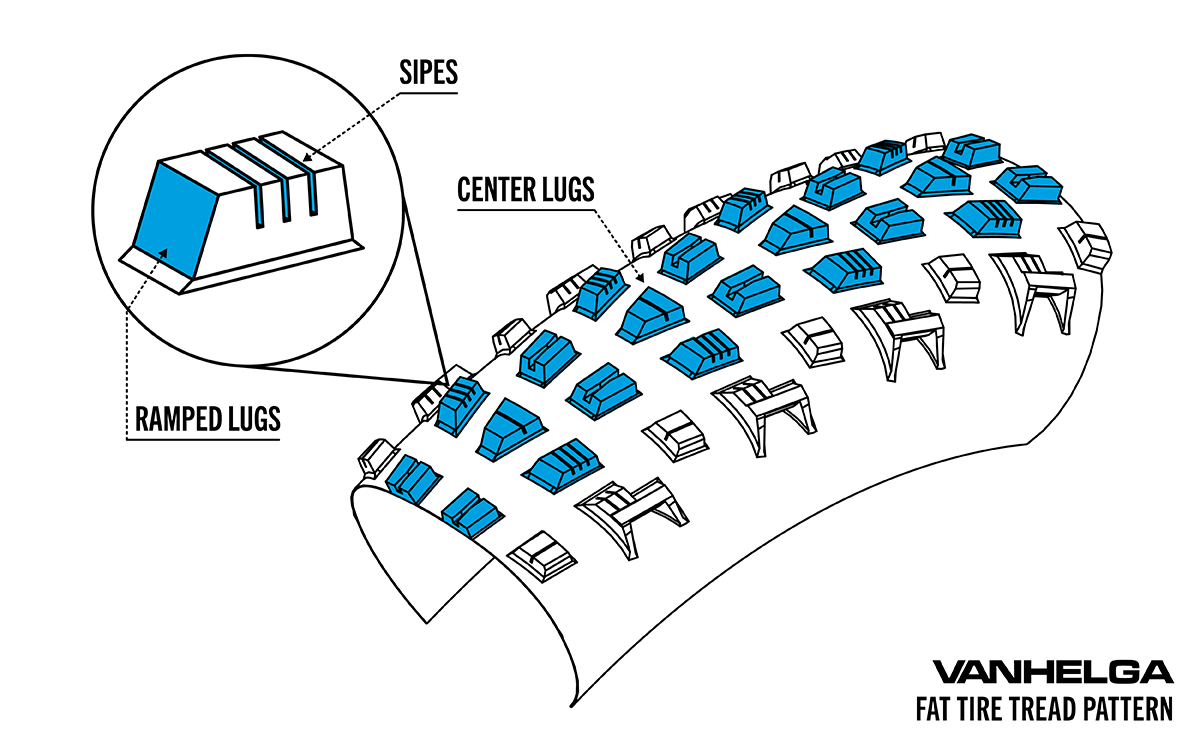
2. Braking Traction is a tire’s ability to maintain grip while stopping. Tires are less responsive on loose surfaces such as snow, so being able to brake as effectively as possible is a major asset.
The tire’s center tread is most responsible for braking traction, though the transition and side lugs come into play if you brake while cornering. Lugs with tall, flat rear-facing sides offer the best braking traction to keep you in control.
The way the lugs are laid out on the tire can also benefit braking traction. Tires such as our Wrathlorde and Hüsker Dü feature lugs arranged in a shovel shape, which acts as a snow plow to build up more material behind the lugs, reducing momentum.
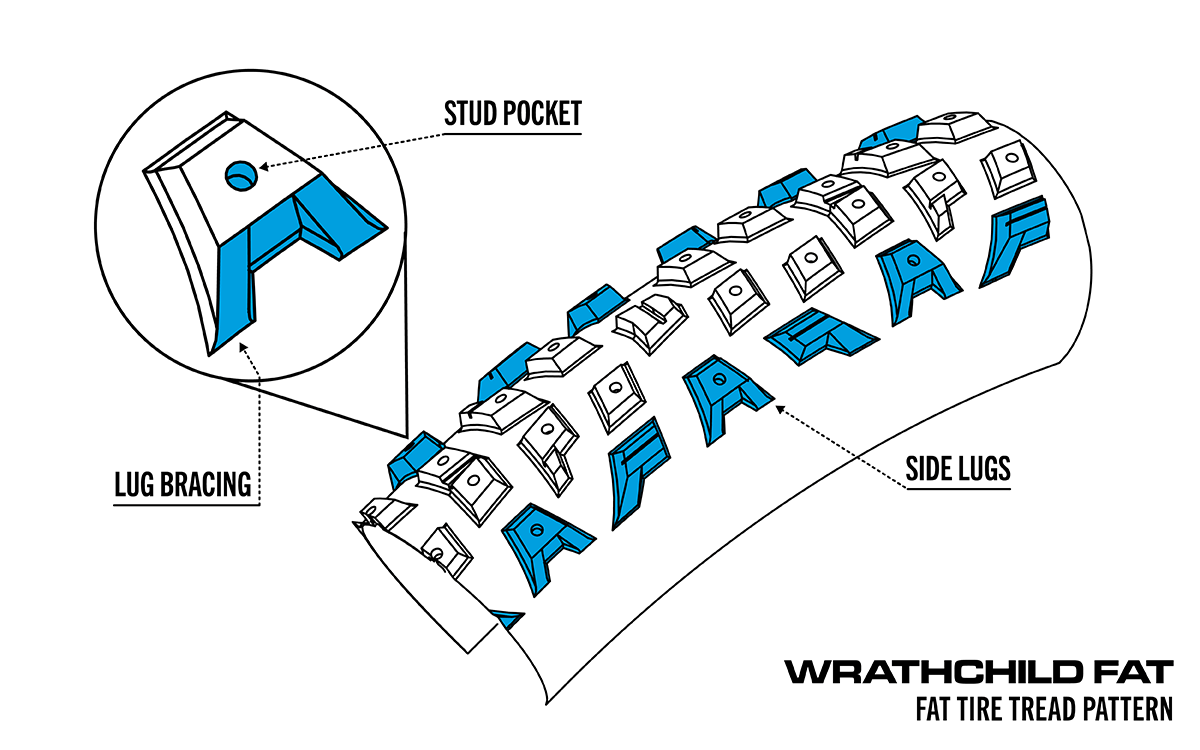
4. Rolling Efficiency is a tire’s ability to maintain its momentum while rolling.
Once again, the center tread plays the largest role here, as it’s the part of the tire most often in contact with the ground. There are three main tread pattern features factors to consider when determining how efficiently tire will roll:
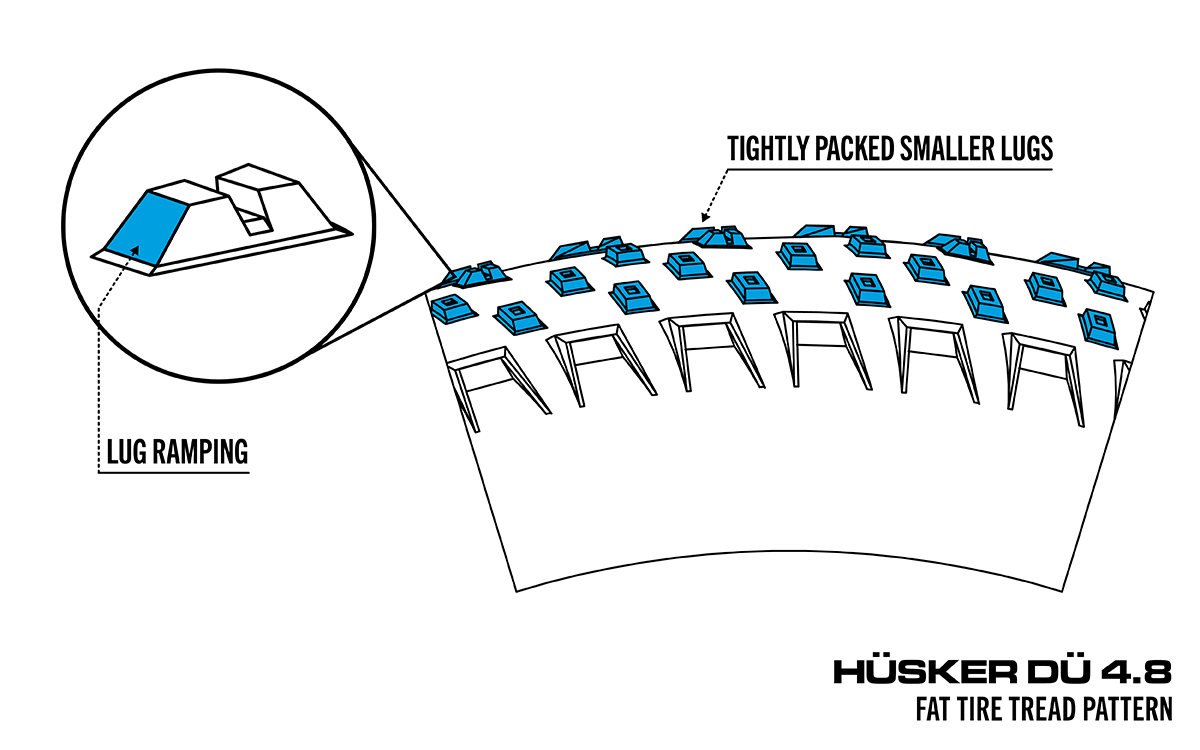
A Note on Float: A tire’s “float” is its ability to roll over deep snow or sand. A large tire casing with low air pressure results in more float, since its large footprint distributes pressure across a large surface.
Studs Add Traction: Many tires intended for winter use come with metal studs (or stud pockets where you can insert them in a custom pattern). Studded tires offer ultimate traction on slick and icy surfaces.
- Lug Spacing – lugs that are spaced tightly together roll easier than a tread pattern with widely-spaced lugs.
- Lug Size – Smaller lugs generally roll more efficiently than larger lugs.
- Lug Ramping – Lugs with ramping on the forward-facing edges roll easier than flat-faced lugs.
Now that you know all about the key parts of a tire, here’s how they come into play in a variety of winter riding conditions:
Deep Snow: Larger, spaced-out lugs have more traction for pedaling, cornering, and braking. Spaced-out lugs will also help shed snow. The float of a large-volume tire helps keep your bike from sinking into the snow.
Firmer Conditions (packed snow, groomed trails): Smaller, ramped lugs provide enough grip for firmer riding surfaces but allow you to maintain momentum and speed.
Icy Conditions: Siping on tire lugs helps them find traction on slick surfaces. Studs increase control exponentially when pedaling, cornering, and braking on ice.
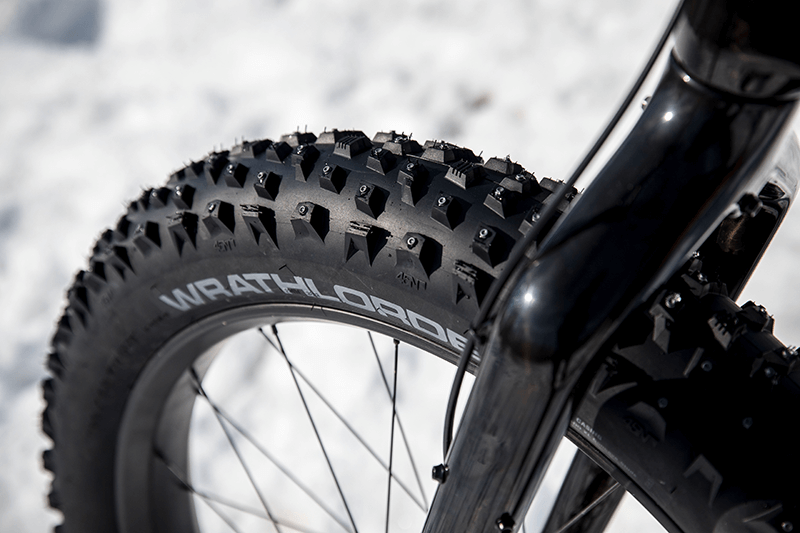
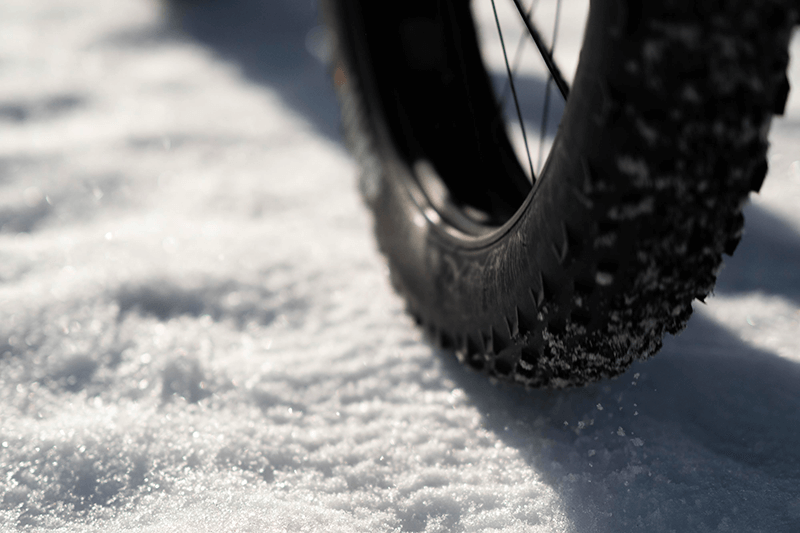
Hopefully this will help you choose the best winter bike tires, whether you commute on slick city streets or ride snowy forest trails. If you have more questions about our tires, speak to your local 45NRTH dealer or send us a message at info@45nrth.com.
